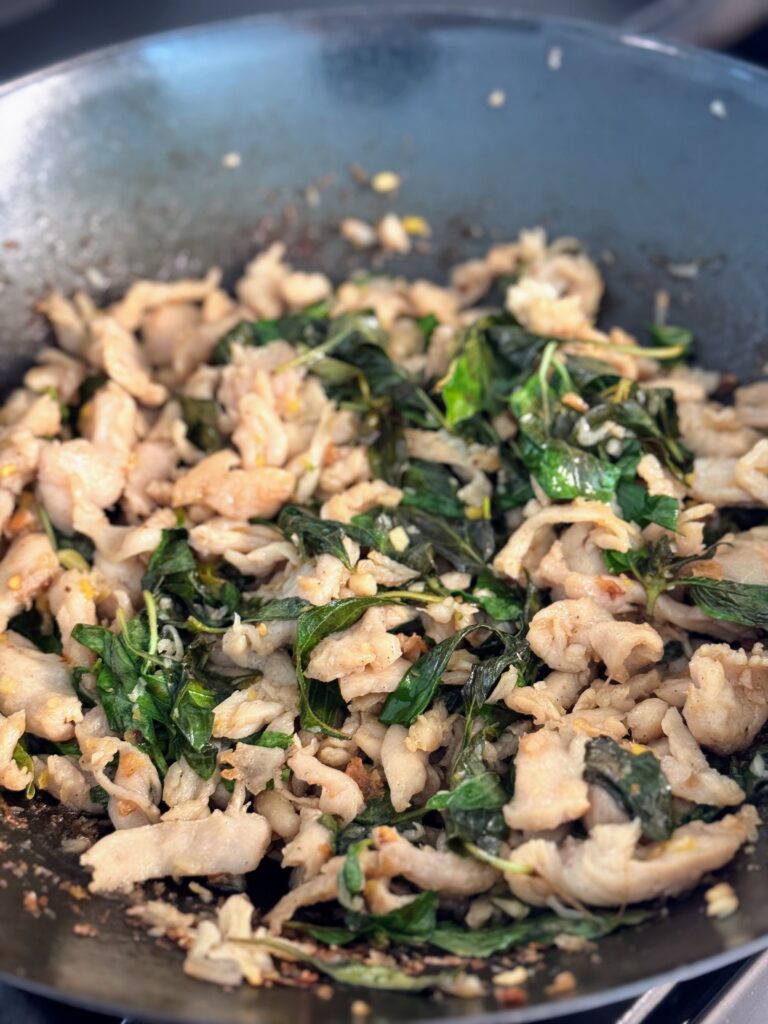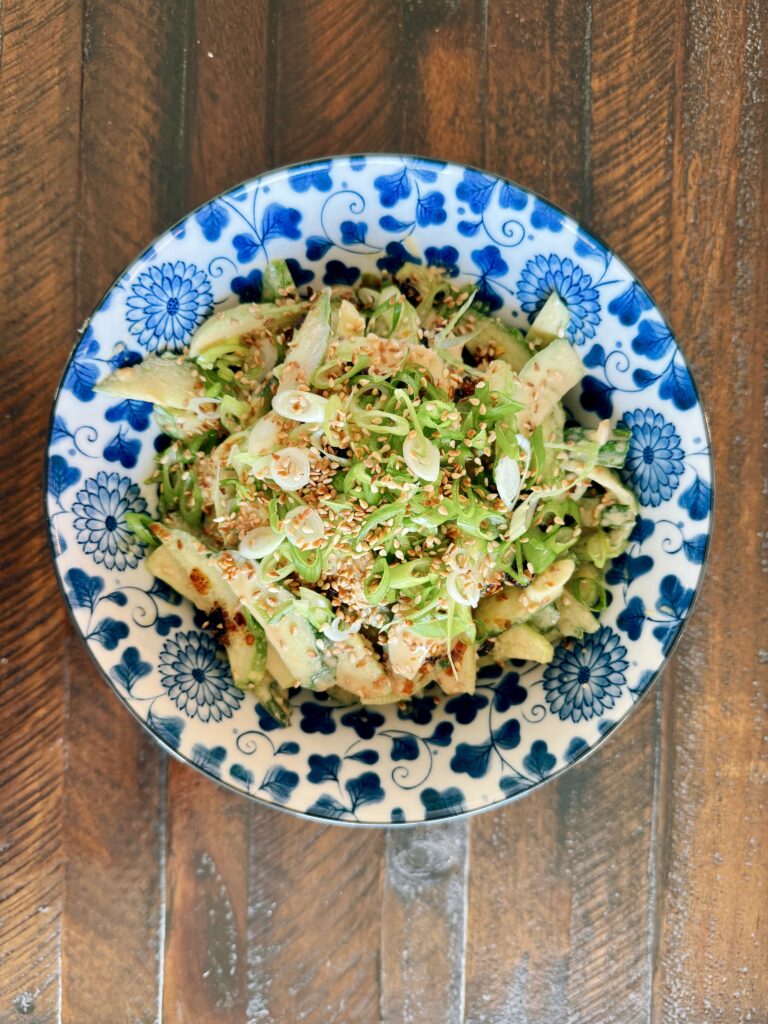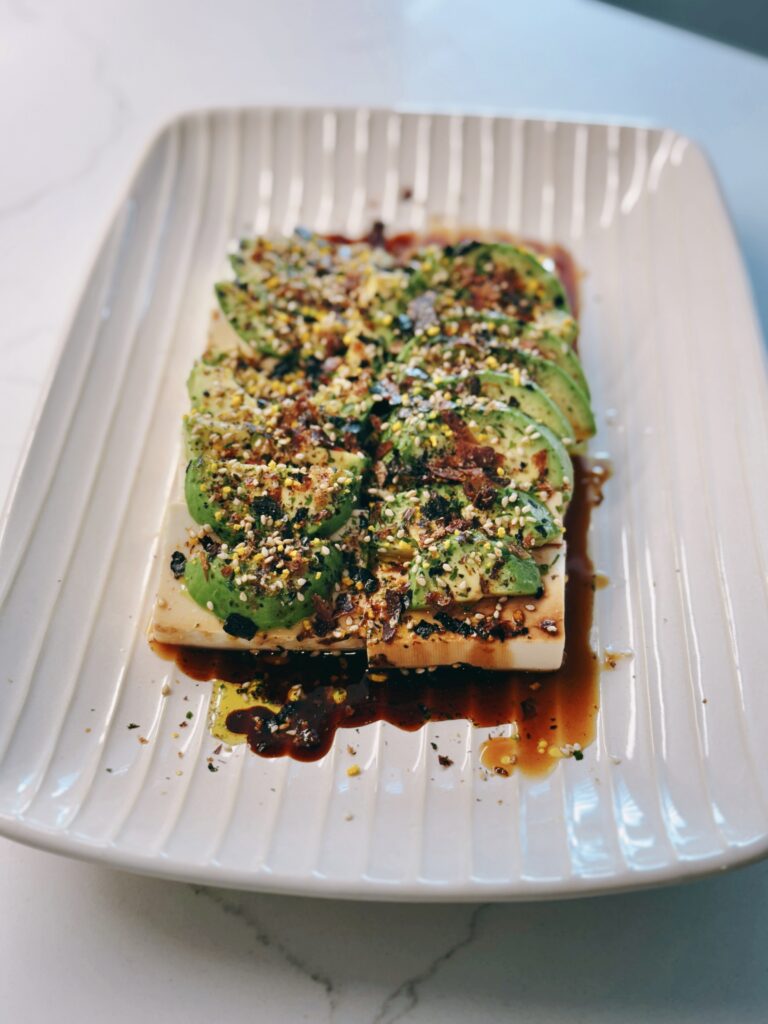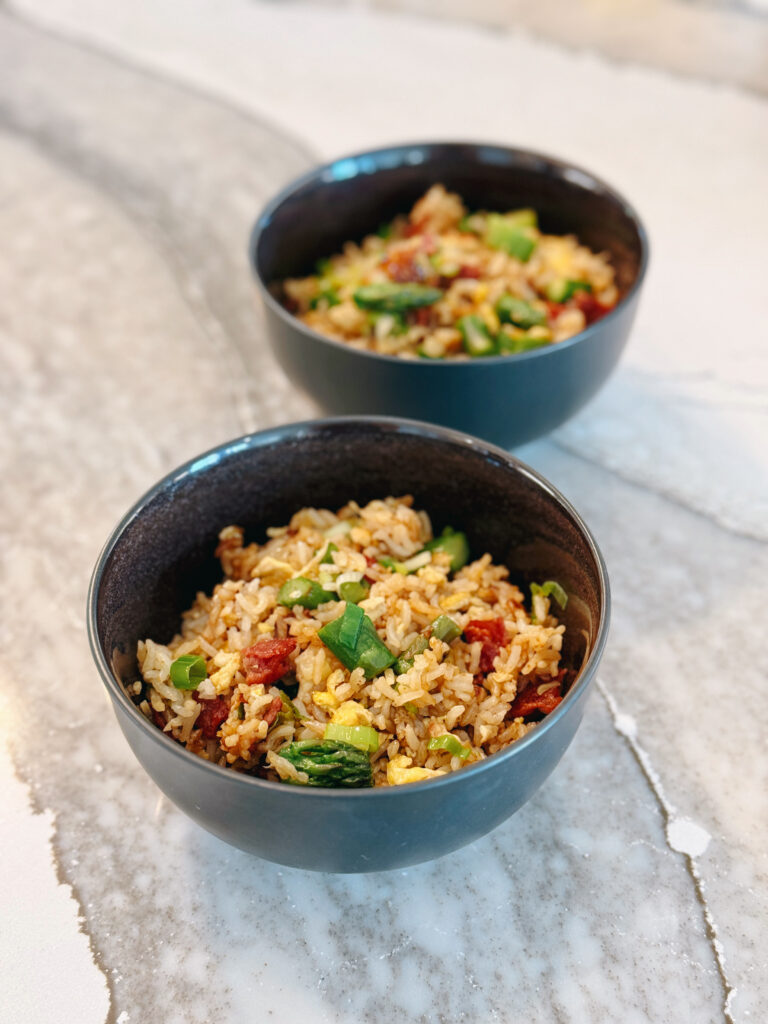I finally got J. Kenji Lopez-Alt’s tome The Wok a few months ago and honestly? It’s one of the best cookbooks I’ve ever cooked from. All hits, no misses. The first dish I cooked out of the book was this Thai-style chicken stir-fry, with an Iranian twist. Lopez-Alt calls for Thai basil this recipe, but I was gifted a bumper crop of Persian basil and used that instead. Both basils posses a strong anise and licorice-like flavor so the substitution worked perfectly. Serve this with jasmine (or basmati!) rice and think of it as a delicious Thai-ish Iranian-ish mashup.

For the chicken:
- 1 pound boneless, skinless chicken breast, cut into 1/8-inch slices
- 1/2 teaspoon salt
- 1 teaspoon fish sauce
- 1/4 teaspoon pepper
- 1 teaspoon sugar
- 1/2 teaspoon baking soda
- 1/2 teaspoon cornstarch
For the sauce:
- 1 tablespoon fish sauce
- 1 tablespoon sugar
- 1/8 teaspoon pepper
- Hot red pepper flakes to taste
For the stir-fry:
- 2 tablespoons avocado oil
- 4 garlic cloves, 2 smashed, 2 minced
- 1 teaspoon minced ginger
- 1 shallot, sliced
- 2 cups loosely packed Persian or Thai basil leaves
- Prepare the chicken: Place chicken in a medium bowl, cover with cold water, and vigorously agitate it. Drain through a strainer set in the sink and press on the chicken with your hands to remove excess water. Return the chicken to the bowl and add the fish sauce, pepper, sugar, baking soda, and cornstarch. Stir vigorously with your fingers for 30 seconds. Set aside while you prepare the remaining stir-fry ingredients (at least 15 minutes).
- Prepare the sauce: Combine the fish sauce, sugar, pepper, and chile flakes.
- Make the stir-fry: Heat 1 tablespoon oil and the smashed garlic cloves in a wok over high heat until the garlic is sizzling at starts to brown. Add the chicken, spread it into a single layer, and cook without moving until lightly browned, about 1 minute. Continue cooking, tossing, and stirring frequently, until the exterior is just cooked, about 2 minutes. Transfer to a bowl.
- Wipe out the wok and add the remaining tablespoon of oil and heat over high heat until shimmering. Add the minced garlic, ginger, and shallots and stir-fry until fragrant, about 30 seconds.
- Return the chicken to the wok and stir-fry until the chicken is cooked through and the shallots are softened, about 2 to 3 minutes.
- Add the sauce and toss to coat. Add the basil and toss until they’re wilted. Transfer to a plate and serve with rice.




